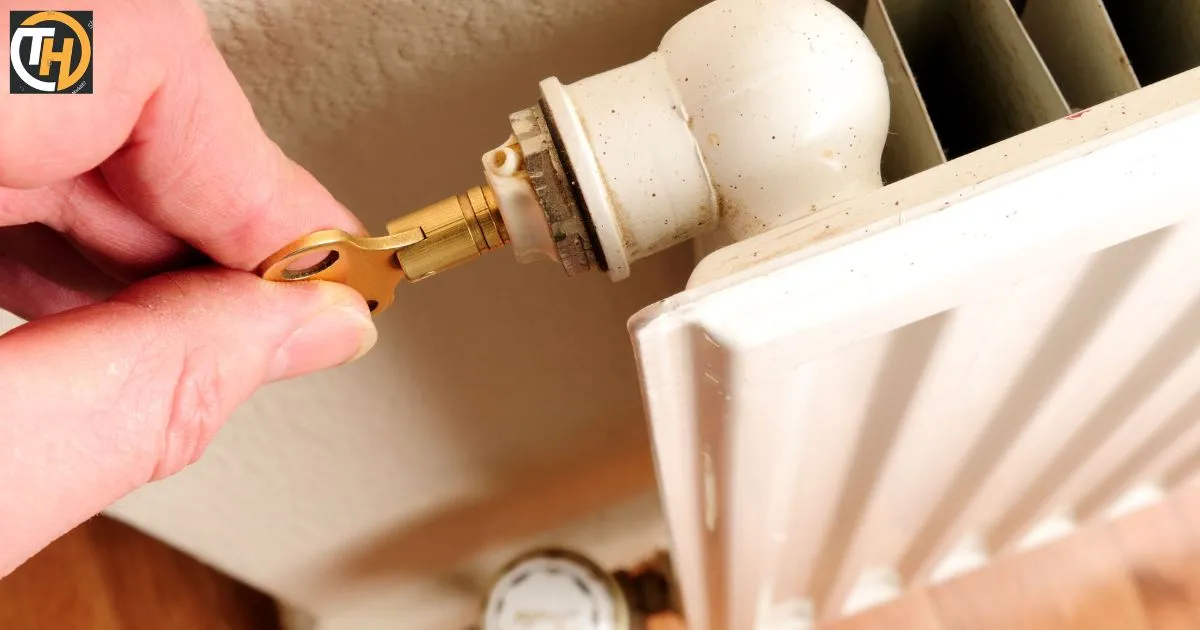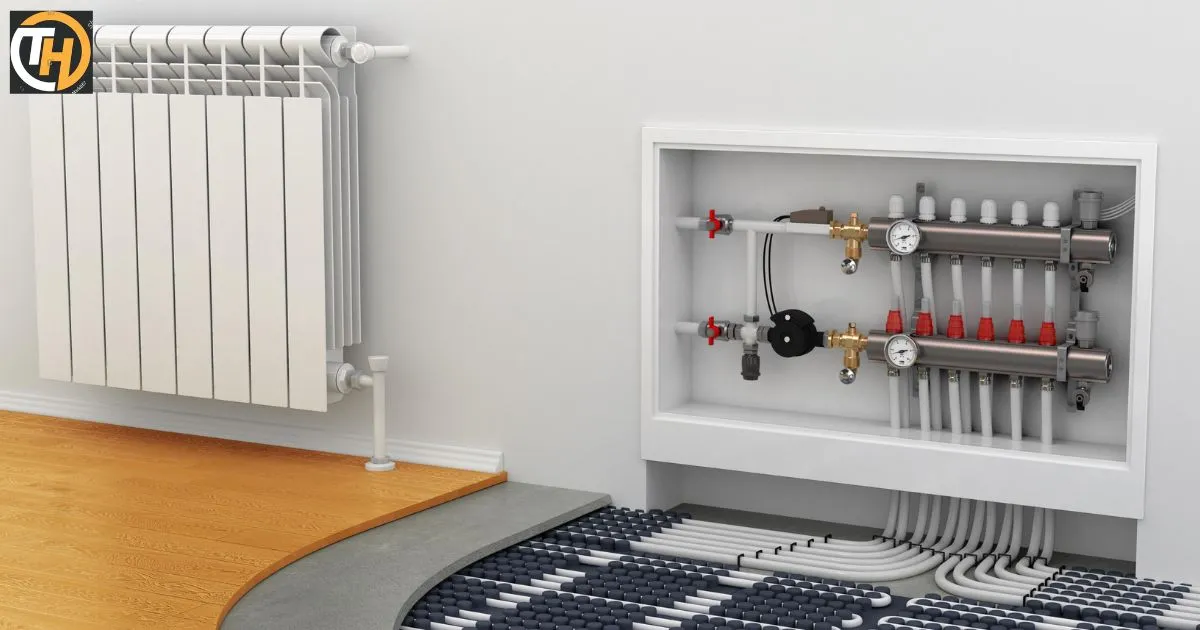A radiator heating system is a popular method for keeping homes warm and cozy during chilly weather. One common issue homeowners encounter with these systems is a drop in their water levels over time.
Imagine a crisp winter morning the temperature outside is freezing, and you’re seeking solace in the warmth of your home. As you wander from room to room, you might notice that some areas are warmer than others. Uneven heating can be frustrating, but the solution might be simpler than you think.
Adding water to a radiator heating system is a vital process to maintain its efficiency. These systems comprise a boiler, a network of pipes, and radiators that distribute heat throughout your home. As the boiler heats water to a set temperature, it circulates this hot water through the pipes and into the radiators.
Understanding Radiator Heating Systems
To grasp the process of adding water to a radiator heating system, it’s essential to have a solid understanding of how these systems operate. Radiator heating systems are time-tested methods of keeping homes warm and cozy during the cold season.
At the core of a radiator heating system lies the boiler. This critical component is responsible for heating water to a predefined temperature, a process that initiates the entire system’s functionality.
Now, let’s turn our attention to the radiators, which serve as the heat exchangers in this setup. When hot water courses through these radiators, they undergo a transformation into efficient heat emitters. The radiators work by releasing the warmth contained within the hot water into the surrounding air.
Importance of Adding Water
Maintaining the right water level in your radiator heating system is paramount for its efficient and effective operation. As we delve deeper into the process of adding water, let’s first establish the significance of this maintenance task.
Efficient Heat Distribution
One of the key reasons why adding water to your radiator heating system is essential is to ensure an even and efficient distribution of heat throughout your home. Over time, due to a variety of factors, including evaporation and potential leaks, the water level in your system can decrease. When the water level drops too low, it can disrupt the heating process.
Preventing Inefficiency
A radiator heating system that operates with insufficient water may not function at its peak efficiency. This inefficiency could translate into higher energy bills as the system works harder to compensate for the lack of water. Moreover, it can lead to discomfort during the winter months, particularly in rooms where the heating is compromised.
Identifying Issues
The act of adding water also provides an opportunity to inspect and identify potential issues within your radiator heating system. During this process, you can assess the condition of pipes, valves, and radiators for signs of wear and tear. Identifying and addressing problems early can save you from costly repairs in the long run.
In summary, adding water to your radiator heating system is not merely a routine maintenance task but a vital step in ensuring efficient heat distribution, preventing inefficiency, and identifying potential problems. Neglecting this task can lead to uneven heating, increased energy costs, and a less comfortable living environment during the winter.
Adding Water to Radiator Heat Systems: In this section, we will discuss the process of adding water to radiator heating systems. Radiator heating systems play a crucial role in providing warmth to our homes, and maintaining the right water levels is vital for their efficiency. We’ll guide you through the steps involved in this essential maintenance task.
Manual Water Addition to Your Boiler: Adding water to your boiler is a critical aspect of radiator heating system maintenance. This part of the article will focus on the manual process of introducing water into your boiler when necessary. We’ll explain why this is essential and how it can be done efficiently.
Necessity of Adding Water: Here, we will emphasize the importance of adding water to radiator heating systems, including those that incorporate a water heater that can work without electricity. Understanding why this is necessary will help you appreciate the significance of this maintenance task. We’ll explore the consequences of neglecting it and the benefits of keeping your system, including your electricity-independent water heater, properly hydrated.
Identifying the Inlet Valve: The inlet valve is the entry point for water into the system, and knowing how to locate it is essential for adding water. We’ll provide detailed instructions on finding and working with this valve to ensure a smooth water addition process.
Steps to Add Water to a Radiator Heating System
Adding water to your radiator heating system is a straightforward process that you can do on your own. Here are the steps to follow:
Tools and Materials You’ll Need
Before you start the process of adding water to your radiator heating system, it’s essential to have the right tools and materials on hand. Here’s what you’ll need:
A Bucket: Having a bucket at the ready is essential. It will be used to collect any excess water that may spill during the process, ensuring a tidy and hassle-free operation.
A Hose: You’ll require a hose to connect your water source to the heating system. The hose acts as the conduit through which you can introduce water into the system, making it a critical component of the process.
A Radiator Key or Bleed Key: This small, L-shaped tool is indispensable for the task. It’s specifically designed for bleeding the radiators and adding water to the system. The radiator key fits perfectly into the radiator’s bleed valve, allowing you to carry out this essential maintenance task with ease.
A Towel or Cloth: Keeping a towel or cloth within reach is advisable. It serves as a handy tool to quickly and effectively clean up any drips or spills that may occur during the process. Having it on hand ensures a clean and trouble-free operation.
With these tools and materials at your disposal, you’ll be well prepared to add water to your radiator heating system and maintain its efficiency and performance.
Ensuring Safety
Safety is a top priority when working with heating systems. Before you begin adding water to your radiator heating system, follow these safety precautions:
Turn Off the System: Ensure that your heating system is turned off, and the radiators have cooled down. Attempting to add water to a hot radiator can result in burns or other injuries.
Work Cautiously: Take your time and work carefully to avoid accidents.
Wear Protective Gear: Although not mandatory, wearing gloves and safety goggles can offer extra protection while working on your heating system.
Bleeding the Radiators

Bleeding the radiators is a crucial step in the process of maintaining your radiator heating system’s efficiency. Here’s how to do it:
Locate the Bleed Valve: Begin by finding the bleed valve situated at the top of each radiator. This valve often appears as a small, square-shaped screw or a compact round valve.
Insert the Radiator Key: Take your radiator key and insert it into the valve. With gentle pressure, turn the key counterclockwise. As you do so, you’ll hear a distinct hissing sound this is the sound of trapped air escaping from the radiator.
Wait for Water Flow: Continue turning the key counterclockwise until you notice a significant change. When water begins to flow steadily from the valve, it’s a clear sign that all the trapped air within the radiator has been successfully purged.
Close the Valve: Once you’ve ensured that water flows consistently from the valve, it’s time to close the valve. To do this, gently turn the radiator key clockwise. This seals the valve and completes the process.
Repeat for All Radiators: Don’t forget to repeat this process for all the radiators throughout your home. This thorough approach ensures that each radiator is functioning optimally, contributing to even and efficient heating.
By bleeding your radiators, you’re helping your heating system perform at its best, as well as maintaining a cozy and comfortable living environment.
Common Issues and Troubleshooting
As you perform this maintenance task, you may encounter a few common issues that need troubleshooting:
- Airlocks: Sometimes, air can become trapped in the heating system, preventing water from flowing efficiently. Bleeding the radiators should resolve this issue.
- Leaking Valves: If you notice that a valve is leaking, you should address it promptly. Leaking valves can lead to water loss and reduced heating system efficiency. In most cases, you’ll need to tighten or replace the valve.
Maintenance Tips
To ensure your radiator heating system continues to perform optimally, consider these maintenance tips:
- Regularly Check for Leaks: Periodically inspect your radiators for any signs of leakage. Address leaks promptly to prevent water loss.
- Monitor Pressure: Keep an eye on the pressure gauge of your heating system. The pressure should typically be between 12 and 15 pounds per square inch (PSI). If the pressure drops consistently, you may have a leak or other issues that need attention.
Benefits of a Properly Maintained System
A well-maintained radiator heating system offers several benefits:
- Energy Efficiency: Proper maintenance ensures that your system operates efficiently, which can lead to lower energy bills.
- Consistent Heating: Regularly adding water and bleeding radiators ensures that heat is evenly distributed throughout your home.
- Extended Lifespan: By taking care of your system, you can extend its lifespan, saving you from the costs of replacement.
Table: Summary of Adding Water to Radiator Heating System
| Process Step | Key Points | Description |
| Understanding Radiator Heating Systems | Boiler heats water | Learn how radiator systems work to grasp the significance of water addition. |
| Importance of Adding Water | Maintains system efficiency Prevents uneven heating | Maintaining the right water level is essential for efficient heating. Neglecting it can lead to discomfort and higher energy bills. |
| Tools and Materials You’ll Need | Bucket, hose, radiator key, towel | Locate the bleed valve Use the radiator key Repeat for all radiators |
| Bleeding the Radiators | Identify the inlet valve Connect hose Fill the system Check the pressure gauge | Bleed radiators to remove air and ensure proper water flow. |
| How to Add Water | Follow the steps to add water to the radiator heating system. | Follow steps to add water to the radiator heating system. |
FAQs
Which is better coolant or water?
Coolant is better for a radiator as it provides freeze and boil protection and prevents corrosion.
How much water is in a radiator?
Radiators are typically filled with a mixture of water and coolant, usually a 50/50 ratio.
Is it OK to run straight water in the radiator?
Running straight water is not recommended as it lacks the protective properties of coolant.
What happens if the radiator water is low?
Low radiator water levels can lead to overheating and engine damage.
What happens if the radiator runs out of water?
If the radiator runs out of water, it can cause severe engine overheating and damage.
Conclusion
The process may involve locating the inlet valve, connecting a hose, and monitoring the pressure gauge to ensure your radiator heating system remains in top shape. Regular maintenance guarantees comfort, energy efficiency, and peace of mind during the colder months.
Adding water to your radiator heating system is a straightforward task that can significantly impact its performance and efficiency. Regular maintenance is the key to enjoying a warm and cozy home, even during the coldest weather. By following these simple steps and tips, you can keep your radiator heating system in top-notch condition.











